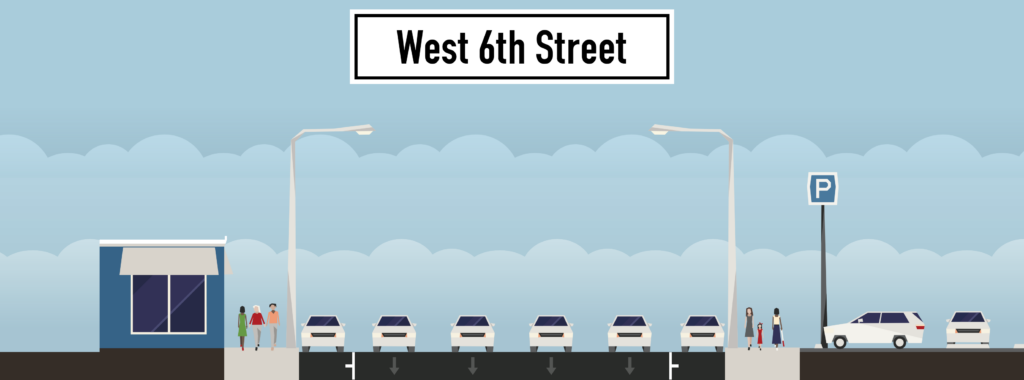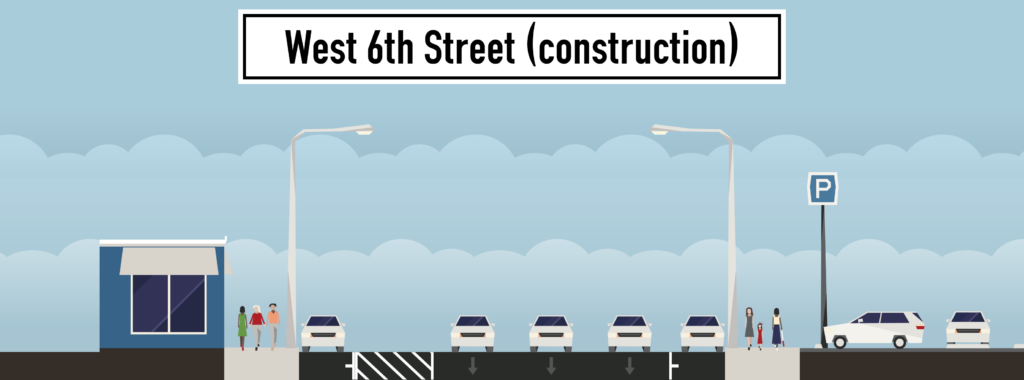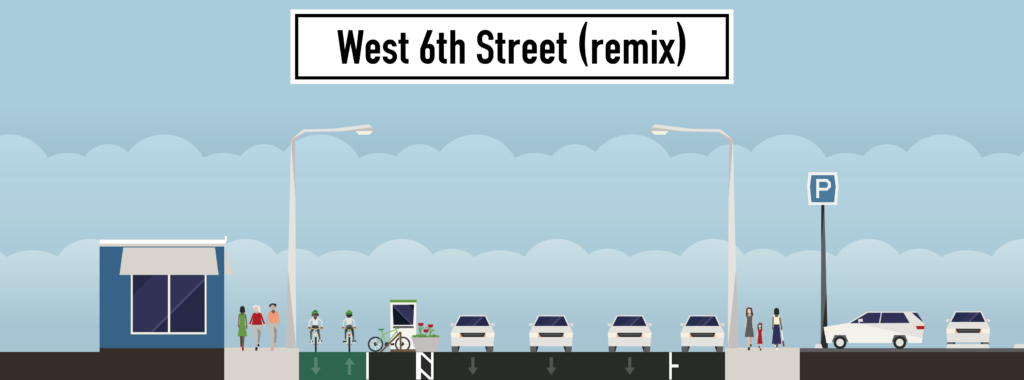There’s a new development on West 6th Street downtown. A six-story hotel going by the name “Canopy By Hilton” is being built next to Star Bar, between Nueces and Rio Grande (details at Towers). Space being rather constrained next to the hotel site, the developers have rented space to stage demolition and construction on the street itself, temporarily narrowing 6th Street:
For the last week, West 6th St has been narrowed between San Antonio and Rio Grande to make room for construction of a hotel. As a result, the street feels much safer. @austinmobility, let's make it permanent. pic.twitter.com/Tllk7FzzAQ
— Dan Keshet (@DanKeshet) September 18, 2018
Here’s what 6th Street looked like pre-construction from the perspective of the Google Maps street view car:
Let’s take that and simplify it a little in StreetMix:

Now, let’s look at what it looks like today:

Let’s simplify that in StreetMix again:

A funny thing happened on my walk home recently. I noticed that there were no cars parked in the parking spots on the left hand side of this picture and a number of people were using it to scoot in. The blocked-off lane was functioning as a buffer between the scooters and car traffic, thus creating a temporary protected lane.
If the city kept this configuration but made it slightly more permanent, here’s what it might look like in StreetMix:

I’ve replaced the car parking on the left with a two-way bike/scooter lane and updated the buffer so that people can use it to park scooters. Also, I threw in some potted plants as buffers to discourage people from using the buffer, by accident or impatience. The buffered area could not only fit scooter and bike parking, but it could do so and still leave room for a few taxi/Lyft pullouts. Is this the ideal configuration of West 6th? No; I definitely think a professional street designer could do better. But it shows how even a very low-dollar intervention could simultaneously remove some of the many annoying and at times dangerous conflicts on downtown streets:
- Conflicts between people riding scooters and people driving cars
- Conflicts between people riding scooters and people walking on sidewalks
- Conflicts between people parking scooters and people walking on sidewalks
- Conflicts between people getting picked up or dropped off in Uber/Lyft cars and people driving cars, scooters, or bikes.
Of course, just because this configuration wouldn’t cost much money to execute, it doesn’t mean there aren’t non-financial costs:
- 13 meter spaces are removed from the street, forcing more drivers to pay market rates to park their cars in parking lots or garages.
- One car-sized lane has been removed from the street, reducing the peak capacity and slowing the time it takes for drivers to get from downtown to Mopac at rush hour.
Conveniently, Austin has more parking downtown than it has land downtown. (This is true because parking spaces are largely stacked on top of one another).
The amount of parking in Downtown Austin is equal to one surface lot larger than Edwin Waller's original city plan. pic.twitter.com/1HE8bbCcTy
— Caleb Alan Pritchardo (@cubbie9000) May 14, 2018
So, the question becomes not one of finance but one of values and vision. Are we a city that values safe, convenient streets for walking, biking, and scooting, as well as driving, or are we a city that can’t wait the additional two minutes to get on Mopac?
